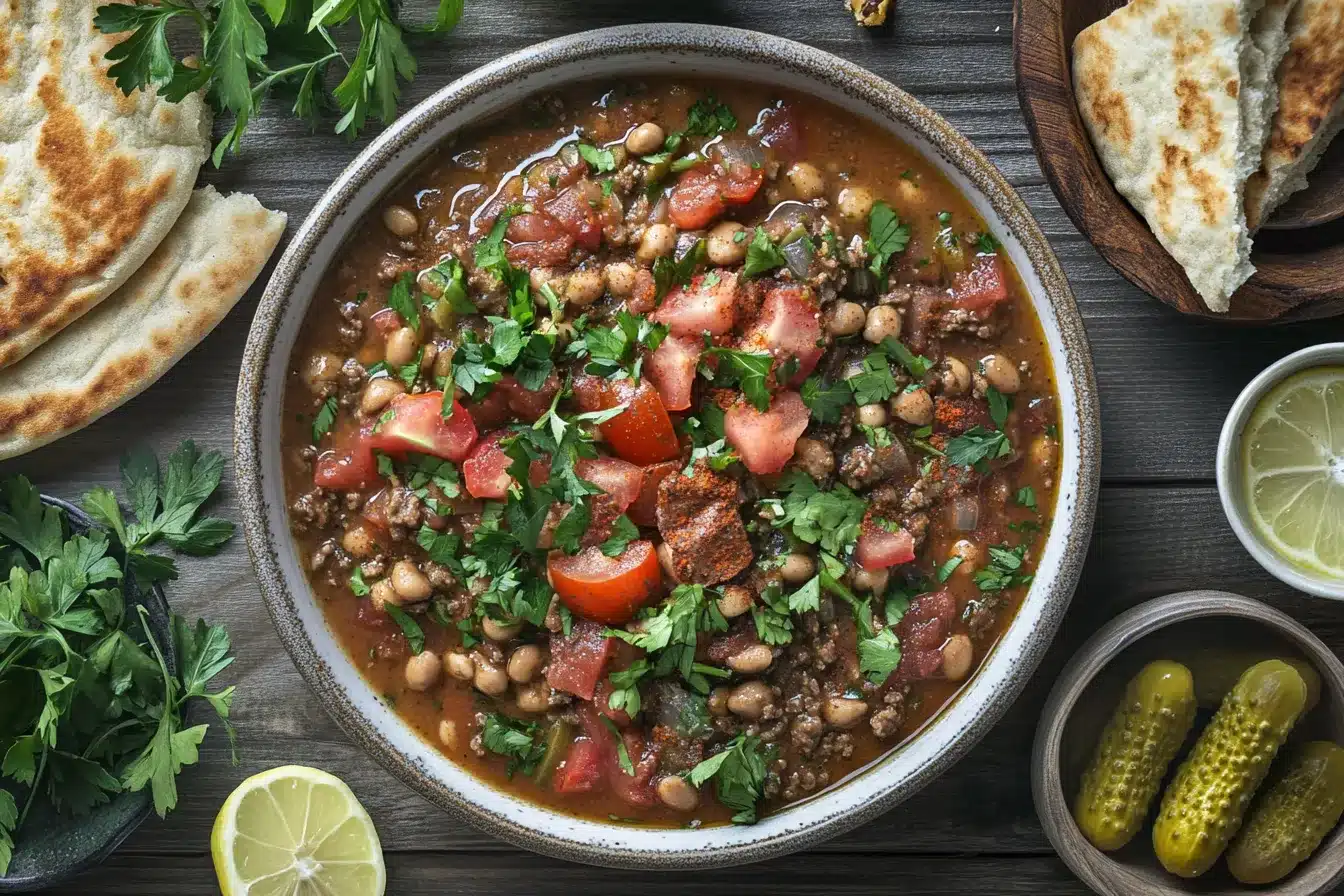Table of contents
Have you ever encountered a dish that’s both hearty and flavorful, a staple that’s been enjoyed for centuries? If not, then get ready to be introduced to ful medames! This isn’t just any bean dish; it’s a cornerstone of Egyptian cuisine and a beloved meal across the Middle East and beyond. But what is ful medames exactly? Let’s dive into the details and uncover the history, ingredients, and preparation of this intriguing dish. Also, we’ll check why it holds such a special place in the hearts (and stomachs!) of so many.
Unpacking the Basics
The beauty of ful medames lies in its simplicity. It’s a dish that highlights the natural flavors of its primary ingredients. So, what exactly does it take to create this hearty meal? Let’s break it down. Additionally, understanding these different components will give you a better understanding of what ful medames truly is.
The Heart of the Dish: Fava Beans
At the core of ful medames are fava beans. These legumes are the star of the show and give the dish its signature texture and flavor. Typically, cooks use dried fava beans, which they then soak and cook until they become tender and creamy. However, some variations might use canned fava beans for convenience, but traditionally, dried beans are the go-to. Therefore, using dried beans will often result in a richer, more authentic flavor.
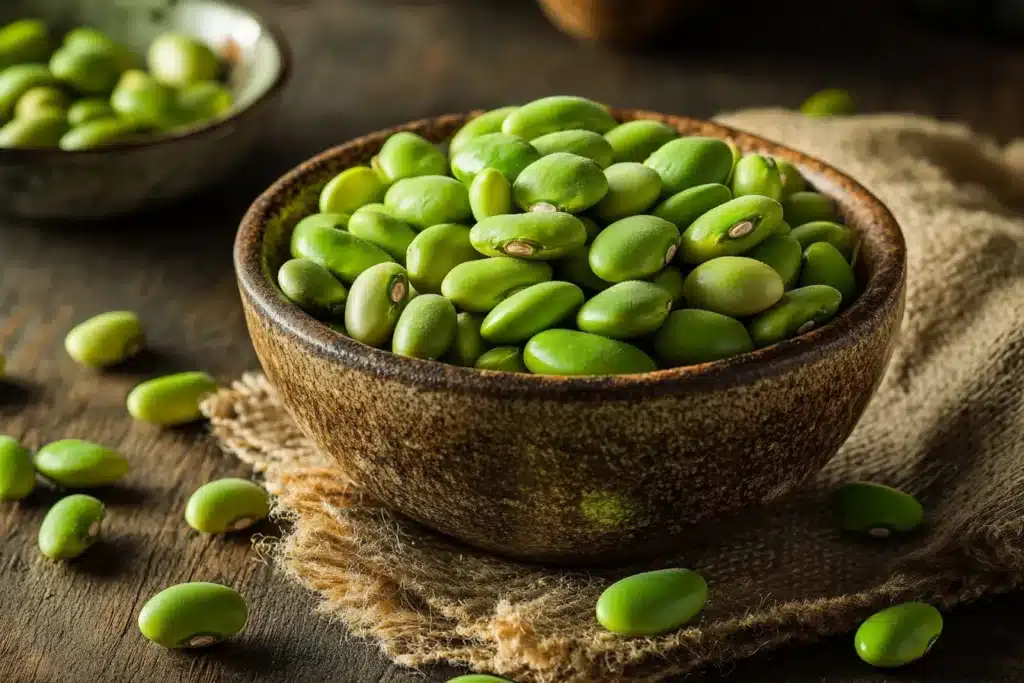
The Flavor Boosters: Aromatics and Spices
While fava beans are the star, aromatics and spices add layers of complexity to the ful medames. Garlic is a must, adding a pungent and savory note. Also, cooks often include cumin, which provides a warm and earthy flavor, and lemon juice, which adds a tangy brightness. Furthermore, a drizzle of olive oil is also a must for a nice finish. In addition, these flavor enhancers make the dish truly irresistible.
The Garnish: Adding Freshness and Texture
To make ful medames more exciting, people typically add garnishes. Common garnishes include fresh parsley or cilantro, which add a pop of color and herbaceous flavor. Also, diced tomatoes and onions are common to provide a fresh texture and savory flavor. These additions help to enhance the overall taste and visual appeal of the dish. Moreover, they also add a layer of freshness.
Optional Additions: Customizing Your Ful
Sometimes, you might encounter versions of ful medames that include a touch of chili flakes for a bit of heat, or a sprinkle of sumac for a lemony tang. Some people also like to add a tahini sauce for extra richness. In addition, hard-boiled eggs are a common addition to make it a more filling meal. While these are not always included, they offer a good way to customize your ful medames. Indeed, these optional additions allow everyone to tailor the dish to their own tastes.
The Cooking Process: From Beans to Deliciousness
Now that we’ve covered the ingredients, let’s dive into how ful medames is actually prepared. The cooking process is relatively simple but requires time and patience. Let’s check the key steps. Besides, understanding the process will help you appreciate the time and effort involved in making this dish.
Soaking the Fava Beans: A Necessary First Step
The first step is to soak the dried fava beans in water for several hours, or preferably overnight. This step is essential to rehydrate the beans and make them easier to cook. Therefore, don’t skip the soaking process! Additionally, soaking helps to reduce the cooking time.
Cooking the Beans: Low and Slow
After soaking, the beans are cooked until they are tender. Traditionally, people cook them over low heat for a long period of time, allowing them to become incredibly soft and creamy. Also, this slow cooking method helps to develop the deep flavors of the beans. Furthermore, slow cooking ensures the beans have the right creamy texture.
Mashing or Leaving Whole: A Matter of Preference
Once the fava beans are cooked, some cooks like to mash them slightly, while others prefer to leave them whole. This is purely a matter of personal preference. Mashing creates a creamier texture, while leaving them whole gives a heartier feel to the dish. Consequently, the choice of whether to mash or not is a personal one.
Adding the Aromatics and Spices: Building Flavor
Finally, after cooking the beans, they are seasoned with garlic, cumin, lemon juice, and other desired spices. This is when the dish’s flavors really come together, creating that signature taste of ful medames. Also, it is essential to make sure the spices are fresh for the best flavors.
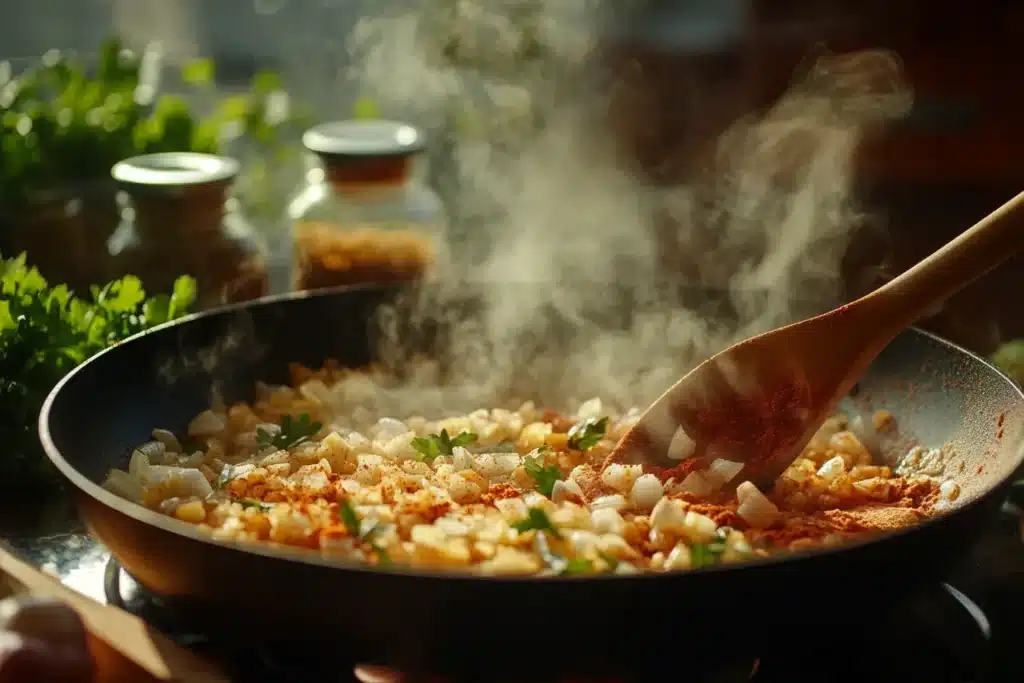
A Nutritional Overview
Beyond its delicious taste, ful medames is also a nutritional powerhouse. Let’s take a look at the nutritional benefits of this bean-based dish. Please keep in mind that the values can vary depending on specific ingredients and serving sizes. This table shows an approximation per 100g. Therefore, these values are a general guideline.
| Nutrient | Amount per 100g |
| Calories | 120-150 kcal |
| Total Fat | 5-7g |
| Saturated Fat | 1-2g |
| Trans Fat | 0g |
| Cholesterol | 0mg |
| Sodium | 100-150mg |
| Total Carbohydrate | 15-20g |
| Dietary Fiber | 8-10g |
| Total Sugars | 2-3g |
| Protein | 8-10g |
| Iron | 2-3mg |
Therefore, based on this data, let’s delve into some key highlights. In addition, this data shows how nutrient-rich this dish is.
Protein and Fiber: A Powerhouse Combination
Ful medames is an excellent source of both plant-based protein and dietary fiber. These are both very important for maintaining good health. Also, this powerful combination can help to keep you feeling fuller for longer. Moreover, these components contribute to overall well-being.
Complex Carbohydrates: Sustainable Energy
The complex carbohydrates in ful medames provide a steady source of energy. They’re a much better option than simple carbohydrates that provide a quick spike in energy followed by a crash. Therefore, this dish is a great option for sustained energy. Indeed, it is a good choice for those seeking a healthy and energizing meal.
Vitamins and Minerals: An Added Boost
Ful medames also contains essential vitamins and minerals, including iron. Iron is important for red blood cell production and overall energy levels. Furthermore, it contains other essential nutrients too. Consequently, this contributes to its overall nutritional value.
Low in Fat and Cholesterol: A Heart-Healthy Option
It is naturally low in fat and cholesterol, making it a heart-healthy option. However, it’s important to be mindful of added fats such as olive oil which add extra calories. Therefore, portion control is key even with healthy fats.
Regional Variations of Ful Medames
Ful medames is a beloved dish throughout the Middle East and beyond, and it’s evolved with regional variations. Let’s take a look at some of the different styles you might encounter. Besides, Learning these different variations offers a fascinating insight into the regional culinary traditions.
Egypt: The Traditional Style
In Egypt, the dish’s birthplace, ful medames is a staple for breakfast, often served with warm pita bread. Egyptians like to serve it topped with generous amounts of olive oil, lemon juice, and cumin. Also, it can be mashed or left whole depending on preferences. Additionally, it is an integral part of Egyptian cuisine.
Sudan: A Flavorful Twist
In Sudan, ful medames is similarly popular, but often incorporates a unique spice blend. For example, they might use a combination of spices like coriander and chili powder. Also, they might add a touch of peanut butter for extra richness. Therefore, this unique spice combination adds a layer of flavor that is typical of Sudanese cuisine.
Lebanon and Syria: Similar but Unique
In Lebanon and Syria, you’ll find versions of ful medames that are similar to the Egyptian style, but with subtle differences in seasoning and garnishes. For example, they might add a sprinkle of sumac or a drizzle of tahini. Consequently, subtle regional differences add to the rich and varied history of the dish.
Other Variations:
While the Middle East is its main domain, ful medames has also found its way into other regions, with cooks adapting it to local tastes. For instance, you might see variations that include other vegetables or spices based on regional preferences. Indeed, the adaptability of the dish has contributed to its global popularity.
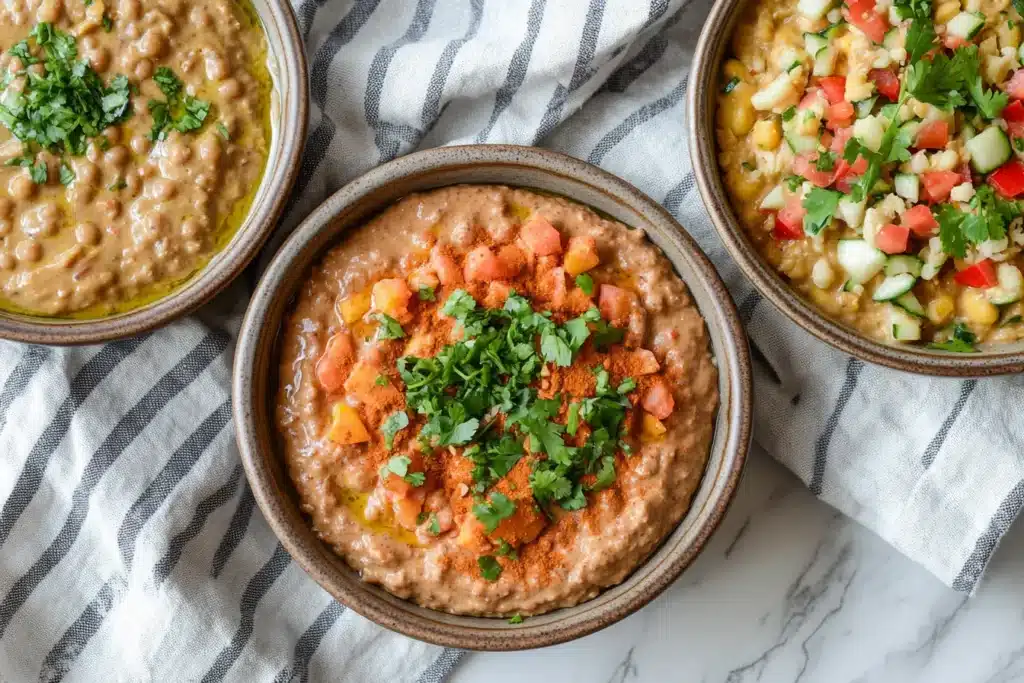
Serving Suggestions of Ful Medames
Now that you know what’s it, let’s talk about the best ways to enjoy this dish. It’s a versatile meal that can be served in a variety of ways. Furthermore, understanding the different ways you can serve ful medames can enhance your culinary experience.
With Pita Bread: A Classic Combination
The most traditional way to enjoy ful medames is with warm pita bread. The bread is used to scoop up the beans and soak up all the delicious flavors. Also, this is a simple and satisfying meal. Therefore, it is a staple in many cultures.
As Part of a Mezze Platter: A Shared Experience
Ful medames also works well as part of a mezze platter, alongside other small dishes like hummus, baba ghanoush, and tabbouleh. This is a great way to enjoy a variety of flavors and textures. Additionally, it’s a great option when dining with friends and family.
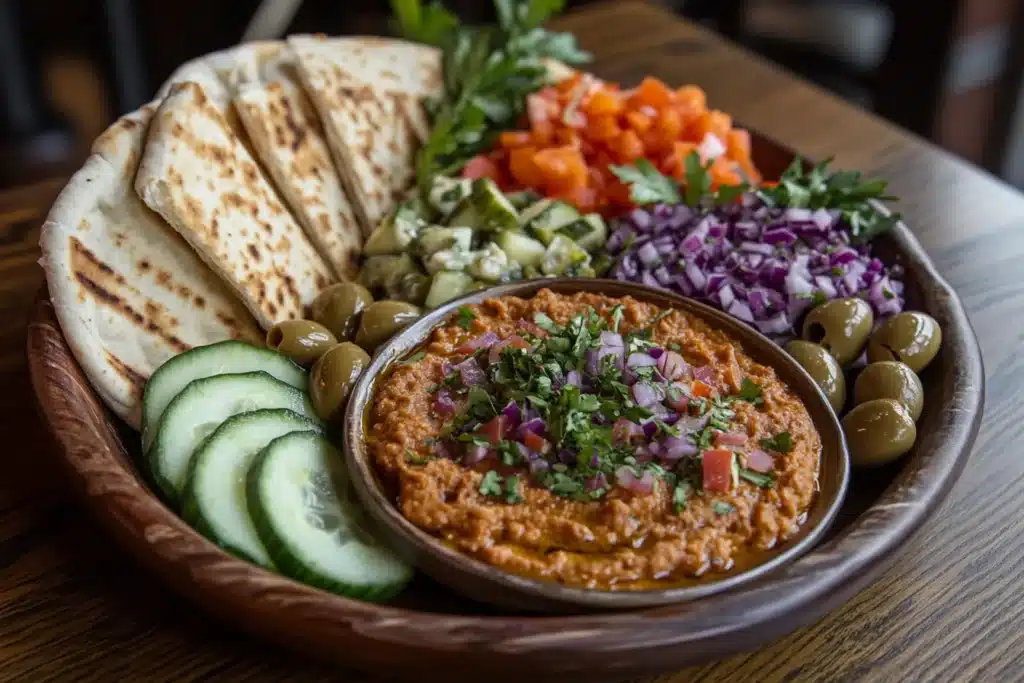
Topped with a Fried Egg: A Hearty Meal
For a heartier meal, you can top your ful medames with a fried egg. The runny yolk adds extra richness and flavor to the dish. Therefore, this is a popular way to make it more substantial. Consequently, it is an easy way to make it into a complete meal.
With Fresh Vegetables: A Balanced Plate
Serving ful medames with a side of fresh vegetables like tomatoes, cucumbers, and onions adds freshness and crunch to your meal. Also, this will help to balance the overall flavors. Indeed, adding fresh vegetables is a great way to round out the meal.
Common Questions About Ful Medames: FAQs
Let’s tackle some of the common questions people have about ful medames: Besides, answering these common questions will give a more complete understanding of the dish.
What are fava beans?
Fava beans are a type of legume with a unique, slightly nutty flavor and a creamy texture when cooked. They are the key ingredient in ful medames. Therefore, they are a fundamental part of the dish’s identity.
Is ful medames vegan?
Yes, traditional it’s vegan, as it is made entirely from plant-based ingredients. Therefore, it is a great option for those who follow a vegan diet. Also, it’s a great source of plant-based protein.
Is ful medames gluten-free?
Yes, ful medames is naturally gluten-free, making it a suitable option for individuals with gluten sensitivities. However, always double-check any added ingredients to be completely sure. Additionally, those with allergies or food sensitivities should always be careful about added ingredients.
Can I make ful medames with canned fava beans?
Yes, you can use canned fava beans as a shortcut. However, using dried beans will give a better flavor and texture. Therefore, dried beans are preferable for the most authentic taste.
How long does ful medames last in the fridge?
Cooked the recipe can last in the fridge for about 3-4 days, stored in an airtight container. Also, make sure to cool it down completely before refrigerating it. Furthermore, proper storage is important for food safety.
Can I freeze ful medames?
Yes, It freezes well. Just be sure to store it in an airtight container. However, the texture might change slightly when defrosted. Consequently, the defrosted version might not be the same as the fresh one.
What does ful medames taste like?
It has an earthy and slightly nutty flavor, enhanced by the addition of aromatics and spices like garlic, cumin, and lemon juice. Therefore, its flavor is very distinct and memorable. Indeed, the combination of flavors makes it unique.
Learning the Cultural Significance of Ful Medames
Now, let’s take a moment to learn about the cultural significance of ful medames. Because, it is more than just a dish; it’s a cultural icon with a deep history and significance.
A Staple of Egyptian Cuisine:
Ful medames is not just a popular dish in Egypt; it’s a staple food that has been enjoyed for centuries. It’s a part of the country’s culinary heritage and an integral part of the daily lives of many Egyptians. Also, it represents the essence of Egyptian food culture.
A Symbol of Simplicity:
The simplicity of ful medames, made with humble ingredients and straightforward preparation, resonates deeply with the people. It is a testament to how simple ingredients can come together to create something so nutritious and delicious. Therefore, it represents the beauty of simple meals.
A Food for All:
Ful medames is a food that is enjoyed by everyone, from the rich to the poor, and from the young to the old. It’s a dish that is shared and enjoyed by all, irrespective of background. Indeed, it serves as a unifying force in many communities.
The Enduring Appeal of Ful Medames:
The enduring appeal of ful medames lies in its combination of flavor, nutrition, simplicity, and cultural significance. Since it was first prepared many years ago, it has stood the test of time. Above all, it is a dish that is universally loved.
Conclusion: The Enduring Charm of Ful Medames
So, there you have it – a deep dive into the world of ful medames. From what is ful medames made of to how it’s enjoyed, we’ve checked the many facets of this beloved dish. With its humble ingredients, simple preparation, and impressive nutritional profile, ful medames stands as a testament to the beauty of simple, delicious food. It’s a dish that has sustained generations and continues to be enjoyed by people all over the world. Whether you’re new to ful medames or a long-time fan, it’s a dish that has the power to nourish both body and soul. It offers a delightful taste of history and a wonderful way to connect with other cultures.

